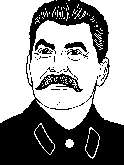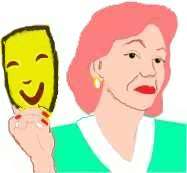| Ethics Dictionary | Conditions Formulas | PTS Glossary | FAQs |
|
| Ethics Dictionary | Conditions Formulas | PTS Glossary | FAQs | |
Ethics Officer's Beingness
Ethics Officer's Code
Note: The codes mentioned here are brought in full in the appendix under "Some Moral and Ethical Codes".
Definition: ARC, A word made from the initial letters of Affinity, Reality and Communication which together equals understanding. If you increase any one of the elements of A, R or C they will all increase and result in increased understanding. ARC is pronounced as three letters A-R-C.
There exist in ST numerous codes that define basic duties and conduct. Some of them are professional codes such as Auditors Code and Course Supervisors Code. They define the proper professional conduct of the person holding that function.
Other codes cover proper conduct of individual members such as PCs Hat and Guidelines for Students.
Yet another code covers morals in general: The Moral Code of The Way to Happiness.
This Moral Code was first presented in a booklet by R. Hubbard around 1980. It is based on good survival principles of the world of today.
There is an Ethical Code, called The Code of Honor.
The Code of Honor is an ethical code. It came about as the result of an analysis of what led to the downfall of individuals over a long span of time. Tracing back personal miseries, degraded beingness or status could all be traced back to breaking one or more points of this code. It is not an attempt to recreate chivalry, although it does give an insight in what chivalry is all about. As an Ethical code it can't be enforced as use of force, all by itself, could easily lead to personal decay.
The Ethics Officer
In all this there is one omission. There is no
professional code of conduct for the Ethics Officer. Yet, being a good Ethics
Officer is something that takes knowledge and discipline. He is actually
delivering a valuable service getting his clients off a slippery slope and back
on track to succeed in life. His immediate objective may be to enable the person
to benefit from auditing. His first objective in ST is to administer Ethics
as that additional tool necessary to get technology in. When technology can go
in the Ethics Officer has done his job. But often what he handles in the process
is something that has ruined the person's life. The Ethics Officer's
intervention, advice, discipline, enforcement and follow-up of the program can be an important lifesaver. When we talk drug addiction
it can be the difference between life and death. An Ethics Officer's usual clientele
may not be drug addicts. But the first technology you would apply to a drug
addict would be Ethics; and what it takes to get a person off the
self-destructive course of such an addiction serves as a good illustration of
what challenges an Ethics Officer may have to overcome in getting the result he is
going for.
We have several times mentioned that the Ethics Officer isn't bound by the Auditor's Code. That does not mean he is free to dramatize his evil purposes or contempt for mankind if he wants to get results. But you may know enough about drug addiction to know that it would be a lost cause to reform a substance abuser under the Auditor's Code. Substance abuse is self-destructive. Under the Auditor's Code you would not point that out as it would be an evaluation and invalidation which is against the Auditor's Code. An auditor would simply acknowledge and address the situation with questions or processes. Persons in the grip of such an addiction have been known to say and do just about anything to appear to go along - just to betray the apparent trust and satisfy their addiction as soon as they had the chance (see footnote).
We only use substance abuse as an example. It is an example where non-survival behavior has taken over and subdued the individual. It is the Bank and the cravings of the body that run the show. Addicts are known to be totally obsessed with how they get their next fix. People can be obsessed in greater or lesser degree by all kinds of pursuits as discussed earlier. Sex, money, power, food, are classical ones. People in the grip of an obsession or compulsion are incapable of being rational while it is at work. They don't try to compute 'optimum survival' but how to obtain what the Bank or body dictates them to get. The mild mannered approach of the auditor is taken for the approach of a person easy to fool. That is obviously a games condition. The person is going in one direction; the auditor in another which to the Ethics case is seen simply as an easy barrier to get around. The person is unwilling and unable to be in-session and benefit from auditing. It has to be handled in Ethics.
In the final analysis, the only person that really can make the Ethics work and solutions stick is the person himself. The client may initially be convinced that all around him are trying to do him in and he is the innocent victim. Part of the Ethics Officer's job is to find and point out how the client allows this to happen. You address the client as being cause of his situation - not the victim as that is basically a lie. This should be done without using blame. The Ethics Officer should build up a trust aimed at getting the person's silent or expressed cooperation. The Ethics Officer has to be clear on one thing: the sinner in front of him is basically good. He is basically capable of resolving all his ethical problems and wants to do so. The person will co-operate if you can get through to him. Sometimes only in form of silence and apparently with disgust. But it is important to be able to read the subtle indicators when you are dealing with the roughest of cases. The Ethics client will typically appear more quiet and attentive when the right area is being revealed and addressed. A client may occasionally at first blow up in your face as you have put your finger right in the middle of a bad wound; but this can be an indicator of that you are on the right track. If you see the client blow up and then be more responsive, talkative and more willing to look at you, even in an aggressive and insulted way, you may simply have gotten through to the client by pinpointing the exact problem area. You have established the Reality or the ARC triangle. You are now witnessing that the person is moving up the tone scale, from apathy, grief or fear to anger and antagonism. The thing to do is to get the person through it. "The way out is the way through" is a maxim auditors know and use. It also applies to Ethics Officers. He may have to get his client through rough waters before he safely arrives in the harbor at the other side of the ocean.
When you address a person's out-ethics make sure to address the behavior, the bad deeds and dealings as separate from the person himself. You can invalidate the behavior in a professional and direct manner. Seek not to invalidate the person himself and always distinguish between the person and the person's actions and situations. Your basic assumption is, that the being himself is very capable and that only he can bring about permanent change.
Ethics handlings are not auditing. They have the End Phenomena of a pc being able to successfully have the auditing technology applied to him. Yet, if you are auditor-trained and now doing Ethics handlings on clients, you will sooner or later realize that in a high percentage of cases you are handling valence phenomena. That is why the lower Conditions of Treason and Enemy are so effective. In the case of PTS situations you may see a flip-flop between two valences. The PTS will be in complete agreement with the antagonistic person at times, totally under the antagonistic person's control. Then in wild opposition or disagreement. The PTS person is dramatizing the two sides of a Doubt Condition you could say. You could say the agreement is an inflow and the disagreement an outflow. Obviously the person is unable to confront the AT, sometimes even unable to pinpoint who it is. These valence phenomena do not only apply to SPs and PTS'es but also to more ordinary problems and clients. You are handling Bank and valences leading to out-ethics behavior. The Ethics case "knows" how to behave himself. The valence was the perfect package solution.
 |
 |
 |
 |
|
A person can be in the valence of anything. The
valence was the |
|||
The real person is however in there somewhere and puts up this tremendous facade
and show, most of the time unknowingly. You are basically taking control over
the valence or Bank and walking the person through a rough time. When you are done you have to be able to turn
the control and responsibility back over to the
person himself to keep his own Ethics in.
Maintain good control
ST-1 covers, among other things, control and how to use control in a positive way.
There are a set of drills, called Upper Indoctrination Training Routines, that
drills a student's ability to exert positive control on a physical level. He
learns to lead and control another person's body. Such training is very useful to
an aspiring Ethics Officer.
Control may have a bad name, but when you understand what positive control
really is you will also understand why it is an absolute necessity in being
successful as an Ethics Officer. From the
chapter about Objective Processes we have:
"The lowest entrance of the ARC triangle is control for A (affinity). Bodies respond very well to this. Any preclear responds to control regardless of his tone level as you are processing him via a body, because this is the body's level of understanding. Control is solid. Bodies understand that. Therefore control is A. This holds true in physical exercises and in military drilling as well. Control establishes rapport and affinity. If somebody reaches over and controls your body he is certainly 'occupying the same space' to a degree; and this is a basic definition of Affinity. Also, if you have good control over a piece of machinery - like a car - you develop affinity for it. You feel a dislike for or get upset about things you can't control, including machinery and people.
"On a mest universe level and a body level we have havingness or solid mass in the place of reality; and we have verbalization or physical interchange in place of communication. So understanding takes place in terms of control, mass and communication (interchange). Understanding on a physical level always takes place in the framework of (a) mass and the location of it, (b) verbalization, exchange or interchange, (c) and control for affinity. If one disliked somebody on a mass level one would simply refuse to control him and just walk away. The choice we are talking about is to control or not to control.
"Don't get this wrong. We are not trying to rephrase or re-do the ARC triangle. We are simply stating the action level of the ARC triangle - how ARC applies to action on a MEST level. Affinity becomes control or lack of it. The R becomes mass and its location or lack of mass and C is some sort of particle interchange, symbols flying back and forth - in solid form."
Affinity becomes Control
Communication takes place as a physical interchange
Reality becomes mass or lack thereof: Havingness.
This is why we say, always maintain full control of the situation. Don't let the person sit and fool you with long explanations, justifications and rationalizations. He will loose respect for you right there and take you for a fool. Ethics cases respond well to good control. They respect people they can't fool.
You may also have to ask tough inquisitive questions to get the person to talk and come clean. Here you can use the so-called Murder Routine from ST-2:
The so-called Murder Routine is a 'Worse than' technique. The auditor gets the pc to give up his overts by asking him 'terrible' questions and suggesting real bad overts."Murder Routine:
"Example: Auditor: "Have you committed an overt on your wife?" . Pc silent and apparently embarrassed. Auditor: "Did you murder your wife?" Pc: "Oh no! I cheated on her though".
"As in the example it is used to get the pc started, when he sits on something he has in plain view."
When the person starts coming clean, simply shut up and listen with interest, but don't let him off the hook until you have the full picture. Then acknowledge and validate the person for coming clean. Acknowledge him for taking the first important step in turning things around.
When we seek to codify the Ethics Officer's professional conduct it looks like this:
Suggested Ethics Officer's Code
2. Do not invalidate the client's character or intentions but only his actions, situations and false data using objective means and criteria. 3. Use enough authority, pressure and control to overcome the client's Bank behavior and out-ethics behavior. 4. Don't use more authority, pressure or control than needed to overcome the client's Bank behavior and out-ethics behavior. 5. At all times maintain good control of your client. Show respect for your client without allowing to be fooled, deceived or detoured. 6. Keep appointments once made. 7. Make sure your client isn't hungry or exhausted when working with him. 8. See a client's Ethics handling through to the end. Make sure he fully carries out assignments he is given to do. 9. Do not sympathize with a client, but exert good control and coax him to take more responsibility for his actions and situations. Have him realize his part in an Ethics situation that at first glance has him victimized. 10. Never let the client end an Ethics interview or action on his own determinism, but finish off those cycles you have begun. 11. Always grant beingness to the client and work with his basic goodness and his sense of Ethics. 12. Maintain good communication and control when dealing with a client, but do not allow him to go on and on in an attempt to avoid taking his due responsibility for the out-ethics he is there to handle. 13. Ultimately the client is responsible for any Ethics situation he is involved in. Do not accept him or her playing the victim but gently insist until you find what he does that causes the situation to persist. 14. Don't make a client do an Ethics assignment he doesn't understand. Give him things to read and coaches to work with to get him through assignments. 15. Do not try to explain, justify or make excuses for any mistakes on your part, whether real or imagined. 16. Seek advice or study up if you are not sure how to handle a situation with a client. 17. Operate on the stable datum that the client's basic nature is good and that he will be grateful if you set him straight, whether he expresses such gratitude or not at the time. 18. Never use the secrets of a client for punishment or personal gain. Encourage him to come clean but have him understand you are there to get him through his difficulties. 19. Do not falsify, embellish or minimize data in your reports.
|
At this point the above code may not be complete or in its final form. The code is based on general knowledge of the field and practical experience rather than specific references.
Footnote: According to the crime statistics in USA it can be estimated that over 50% of the prison population consists of offenders of drug related crimes. Be it by obtaining money for drugs through crime (24%) or profiting from selling drugs or protecting their "business interests" to sinking to criminal behavior while heavily influenced by drugs. About 47% said they were under the influence when committing their offense. Over 30% of all arrests are due to direct violation of various drug laws, from illegal drug use and dealing in drugs to drunk driving. No statistic was found adding it all up without overlaps.